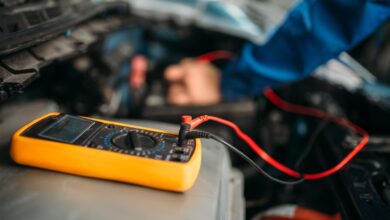Inside Look: How Premier Injection Mold Manufacturers Prioritize Quality and Precision

The injection molding process produces high-quality plastic components for a wide range of industries. Prioritizing precision and reliability in injection mold manufacturing ensures consistent, defect-free production runs.
While injection molding does produce some material waste, the amount is less than with many other manufacturing processes. In addition, the process is highly energy-efficient.
Read More: What You Need to Know About Occupational Health Screenings
Design
A successful project starts with a great design. Injection molding offers many benefits, including the ability to produce parts with complex geometries and detailed features. This helps manufacturers get their products to market faster, which is a crucial advantage in a competitive industry.
A plastic injection molder’s team of engineering project engineers can help with the product development process. They have the skills to review 3D models and product prints to verify if the design is viable for injection molding production.
The team can also provide expertise in designing for precision. This includes avoiding undercuts, which are recessed or overhanging surfaces that prevent the part from being ejected from the mold without damage.
The process also provides flexibility in material and color options. Different polymers have different properties, which can impact how a final product performs and looks. This means that the injection molder can select the right material for a client’s product and production environment.
Parting Line
Injection molding requires that molten plastic be injected into a mold to create a finished product. A machine called a molding press injects the molten resin into the mold through a pipe called a nozzle. The nozzle is seated in a hardened steel insert called a sprue bushing that directs the melted plastic into the mold cavity image. The molded part is ejected from the mold by a set of ejector pins once it has solidified.
It’s important that injection mold designers avoid sharp corners in the part design to ensure that molten plastic can efficiently and uniformly flow into all parts of the cavity. This helps to prevent wavy patterns in the final product and reduces the risk of contamination or material incompatibility. It is also necessary to maintain proper clearance between vertical features like ribs and bosses to allow the cooling process to work effectively. This can help to minimize tooling costs. Performing multiple process capability studies is also an effective way to understand variability and control it as much as possible.
Tooling
Throughout the manufacturing process, the injection mold is carefully monitored and optimized to produce the correct part. A specialized team ensures that all aspects of the production line are functioning correctly, preventing bottlenecking. This includes adjusting the machine for the best results, such as modifying injection pressure or temperature settings.
Other quality control measures include checking for uniform wall thickness, proper draft angles (a slight taper on the parts to align them with the direction of pull), and that all gating systems and part ejection mechanisms are working well. The quality of a finished part depends on how well the mold holds tight tolerances and intricate details.
Finally, performing regular preventative maintenance on the injection mold improves its longevity and quality. It also helps identify problems early and fix them before they affect the quality of the plastic components produced. This minimizes waste and costs and provides more reliable parts for critical applications. The result is an injection molding program that delivers exceptional value to customers.
Read More: What Are The Best Reasons To Become A Mental Health Counselor?
Inspection
Injection molding manufacturers perform numerous quality inspections throughout the process. They also use advanced measurement technologies, such as noncontact gages and test probes, to check the dimensions of finished parts to ensure they’re within the correct tolerances and fit correctly in the intended application.
In addition, comprehensive mold trials are conducted prior to production to verify the functionality of the injection mold, including proper material flow, uniform cooling, balanced filling and accurate part ejection. This helps to identify any potential problems early and eliminate the risk of costly errors in the field.
Using the latest technology to streamline these inspections allows for greater consistency and more efficient operation. This means that you can reduce in-process inventory and other carrying costs while boosting your ROI. A trusted injection mold makers will have the right equipment and high-precision molds to deliver precision plastic parts every time. Moreover, they should provide customer service and technical support throughout the project.










